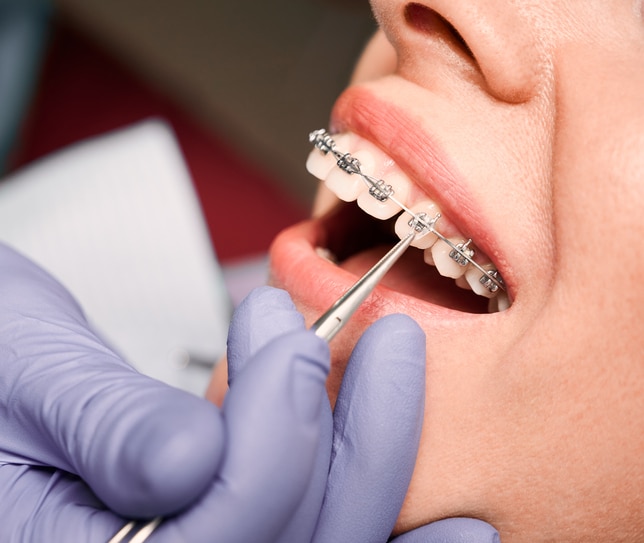Locating the Right Cumming Orthodontist for Your Braces and Aligners Demands
Comprehensive Guide to Orthodontics Procedures for Fixing Oral Imbalances
Understanding the complexities of each treatment, including their systems, benefits, and potential drawbacks, is crucial in making educated decisions about one's orthodontic treatment. As we browse with the detailed guide to orthodontic procedures for dealing with dental imbalances, the detailed details of each method will certainly unravel, dropping light on the path towards a harmonious and functional oral placement.
Orthodontic Procedures Introduction

In addition to typical braces and clear aligners, orthodontists might also suggest other interventions like headwear, palatal expanders, or retainers to address certain alignment problems (cumming braces). These procedures are customized per person's distinct demands and might involve a mix of therapies to achieve the desired outcomes. Routine modifications and surveillance are crucial parts of orthodontic therapy to guarantee progression is on track and to make any type of needed alterations in the process. By undergoing orthodontic treatments, patients can not only accomplish a straighter grin but also enhance their total dental health and function.
Typical Dental Braces: Just How They Work
When thinking about orthodontic treatments for dental imbalances, conventional braces stick out as a time-tested approach for remedying teeth positioning. Standard braces include braces, cords, and bands that collaborate to use continual stress on the teeth, gradually moving them into the desired placement. The brackets are connected to the teeth utilizing a special adhesive, and the cords are threaded via the braces. By changing the tension of the wires, orthodontists can control the direction and pressure put on each tooth, guiding them into appropriate positioning in time.
One secret facet of exactly how typical dental braces job is the procedure of bone makeover. As stress is used to the teeth through the braces, the bone surrounding the teeth is reshaped to sustain the new tooth placements. This makeover is crucial for the long-lasting security of the corrected positioning. People will require routine changes at the orthodontist's office to make sure the braces proceed to use the correct pressure for effective teeth motion.
Invisible Aligners: Disadvantages and pros
These clear, custom-made trays are basically undetectable when put on, making them an appealing choice for individuals looking for a more visually pleasing orthodontic therapy. Patients can remove the aligners prior to eating or cleaning their teeth, lowering the threat of food getting stuck in the device and simplifying the cleaning process.

Surgical Orthodontic Options
Surgical treatments in over here orthodontics existing practical choices for resolving complicated dental misalignments that might not be successfully solved through traditional orthodontic treatments. While traditional dental braces and unseen aligners can deal with several orthodontic issues, specific situations require surgical treatment to accomplish optimum outcomes. Surgical orthodontic options are typically recommended for extreme malocclusions, considerable jaw disparities, and instances where the underlying bone structure needs modification to achieve appropriate positioning.
One common medical orthodontic procedure is orthognathic surgical treatment, which includes repositioning the jaws to remedy useful concerns such as problem chewing or speaking. This surgery is typically performed in partnership with an orthodontist that assists line up the teeth before and after the treatment. Surgical orthodontics might likewise entail treatments to subject influenced teeth, eliminate excess gum tissue, or improve the jawbone to create a more harmonious facial account.
Before considering surgical orthodontic choices, people go through a detailed analysis to determine the requirement and possible advantages of such treatments. invisalign. While surgery may seem challenging, it can significantly improve both the feature and appearances of the smile in cases where standard orthodontic treatments fail
Retainers and Post-Treatment Treatment

Post-treatment treatment entails complying with the orthodontist's guidelines carefully. This may include proper dental health practices, attending follow-up appointments, and putting on the retainers as suggested. Failing to abide by post-treatment care directions can cause regression, where the teeth progressively relocate back towards their initial settings. link Consistent retainer wear, good oral hygiene, and normal dental check-ups are important for maintaining the results attained through orthodontic surgical procedure and ensuring the long-lasting security of the corrected dental placement.
Conclusion
In conclusion, orthodontic procedures provide numerous choices for remedying dental imbalances. Surgical orthodontic options are offered for extra serious imbalances. In general, orthodontic treatments can effectively enhance oral health and wellness and visual look.
As we browse via the detailed guide my blog to orthodontic treatments for fixing dental imbalances, the complex details of each method will unravel, shedding light on the path toward a useful and unified dental placement. - orthodontist
One of the most usual orthodontic therapies is the usage of dental braces, which consist of metal braces and wires that use mild pressure to slowly move teeth right into the desired setting.When taking into consideration orthodontic treatments for dental imbalances, conventional braces stand out as a time-tested technique for correcting teeth positioning. Furthermore, undetectable aligners may not be suitable for complex orthodontic problems that need more significant teeth movement, as they are normally advised for moderate to moderate situations. Retainers are tailor-made orthodontic tools created to hold teeth in their fixed positions after the conclusion of orthodontic therapy.